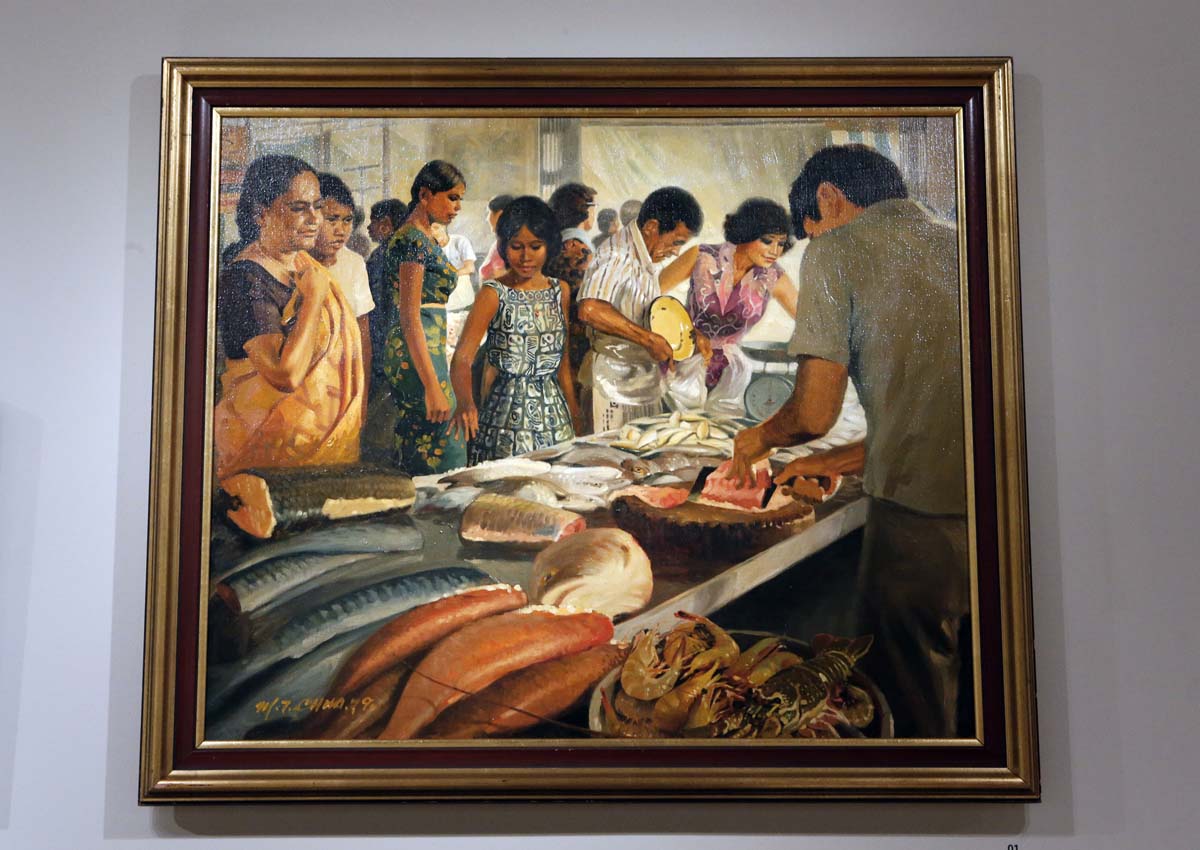Delve into Little India's history at new exhibition

SINGAPORE - Today, it is a red light district associated with sleazy activities after dark.
In 19th-century Singapore, it was a meat district too, albeit one with a bloodier shade of red.
For the Desker Road of the olden days was part of an area where a slaughterhouse was found.
The road was in fact named after Andre Felipe Desker, one of the first butchers in Singapore. The Eurasian of Portugese descent got into the business in the 1850s and owned land stretching from Desker Road to Sungei Road and the Kallang River.
The area was where he ran his abattoir, which had cattle and sheep imported from Australia. They were fattened, slaughtered then sold here.

The origins of Desker Road is just one of the many tales told at the Indian Heritage Centre's first special exhibition, Once Upon a Time in Little India, which was launched by Minister for Trade and Industry S. Iswaran today (Oct 21).
It aims to tell the story of the historic Little India enclave through its key arterial roads - Serangoon Road, Kandang Kerbau and Mackenzie Road.
On display are more than 100 artefacts from the community and the national collection.

They include the late Desker's indenture notice featuring his business address and his last will and testament. These are on loan from his great-grandson, Mr Barry Desker, 69, Singapore's Ambassador to Spain and the Holy See and distinguished fellow at the S. Rajaratnam School of International Studies.
Mr Desker said he was glad to share his family's artefacts with the rest of Singapore.
He said: "I thought it would be useful for Singaporeans to have a sense of history. As a historian myself, I often regret that we in Singapore don't recongise our own history, and where we come from. We exist as if only the present matters."
Indian Heritage Centre curator Nalina Gopal said the exhibition aims to juxtapose past and present: "Little India then, home to a cosmopolitan society with a majority of Indians, is not very different from what it is today.
"Our showcase discusses the different life experiences people have had with reference to the neighbourhood which once stretched from Bras Besah through Dhoby Ghaut, most of Serangoon Road and right up to Potong Pasir. We also draw parallels with the global settlements of the Indian diaspora."

Another lesser known community featured in the exhibition is the Chittys - Indian Peranakans from Tamil Nadu, who settled in Malacca in the 14th century and married local Malay women.
They could be found in Chitty Road in Little India in the late 19th and early 20th centuries.
Mr Iswaran said the special exhibition is a good addition to the centre's existing offerings, which includes a permanent exhibition.
He noted that the centre has attracted 250,000 visitors since it opened last May, exceeding expectations.
The centre does not only serve as a focal point for Indians of Singapore to recollect their past, he said, but it is also about sharing and communicating their culture, history, and traditions "with other Singaporeans of different ethnic groups".

This article was first published on October 21, 2016.
Get a copy of The Straits Times or go to straitstimes.com for more stories.